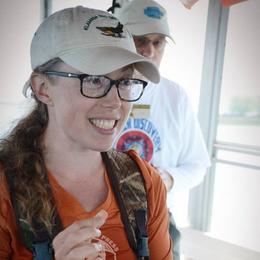With so many people adjusting to life at home, more people are using bird watching, or birding, as a way to connect to nature. And new studies show that birds and bird songs can increase our happiness levels.
But what about during winter? Surprisingly, winter in Michigan is a great time to go birding. Not all Michigan birds fly south to warmer climes. In addition to the birds that stay in the state year-round, Michigan welcomes many new visitors from the north in the colder months, making winter an exciting time to watch birds.
Wondering what birds to look out for? This year was the biggest irruption of northern finches in recent history. Boreal finches have moved south in search of food, and have descended on Michigan in record numbers. There have been a number of reports across the state of Evening Grosbeaks, Red Crossbills, Pine Siskins and other finches overtaking bird feeders – much to the joy of birdwatchers.
Snow Buntings, Horned Larks, and Dark-eyed Juncos also arrive in the winter, as well as northern owls, which are always magical to see! Snowy Owls, Great Gray Owls, Northern Hawk Owls and Boreal Owls make their way into the UP and northern lower peninsula at this time of year. Additionally, hundreds of thousands of ducks, also known as waterfowl, descend on the Great Lakes each fall and winter making winter the perfect season for waterfowl birding in Michigan.
If you’re interested in going birding, but not sure where to start, Michigan is home to over 100 Important Bird Areas – these are areas of international and state-level significance for Michigan’s migratory birds. Many Important Bird Areas double as State Parks, Recreation Areas, Game Areas, and Wildlife Areas and can be found along Michigan’s 9 birding trails. Most of these birding trails are in the UP, northern Lower Peninsula and in Saginaw Bay, while Important Bird Areas can be found across the state.
You can also participate in volunteer community science bird counts each winter, some of which can be done from the comfort of your own home! Winter bird counts help scientists better understand winter bird movements, assess winter bird population health, and guide meaningful conservation action. You don’t have to be an experienced birder to participate. All ages and experience levels are welcome to join these community science winter bird counts.
- Kalamazoo Nature Center’s Michigan Winter Feeder Count runs from mid-November to mid-April each winter and can be done from the comfort of your home. Winter feeder counts are a great family-friendly activity that all ages can enjoy.
- The Great Backyard Bird Count, February 12-15, is a free, fun, and easy event that engages bird watchers of all ages in counting birds.
Interested in learning more about bird identification? Watch MI Birds webinar, "Winter Waterfowl ID: Divers and Dabblers."
MI Birds is a public outreach and engagement program created by Audubon Great Lakes and Michigan Department of Natural Resources, which aims to increase all Michiganders' engagement in the understanding, care, and stewardship of public lands that are important for birds and local communities.














